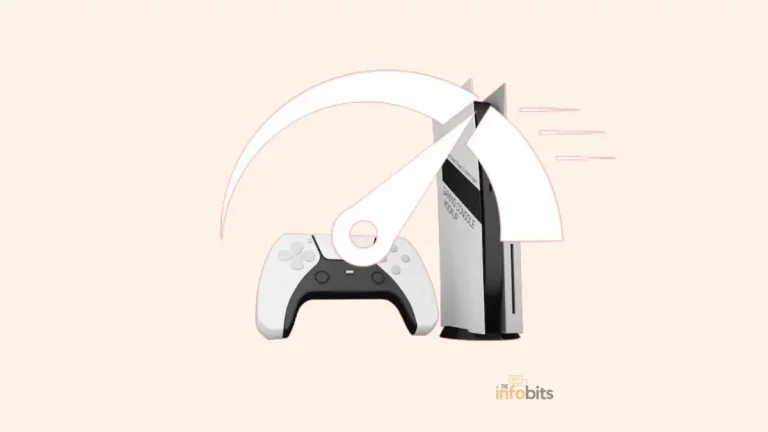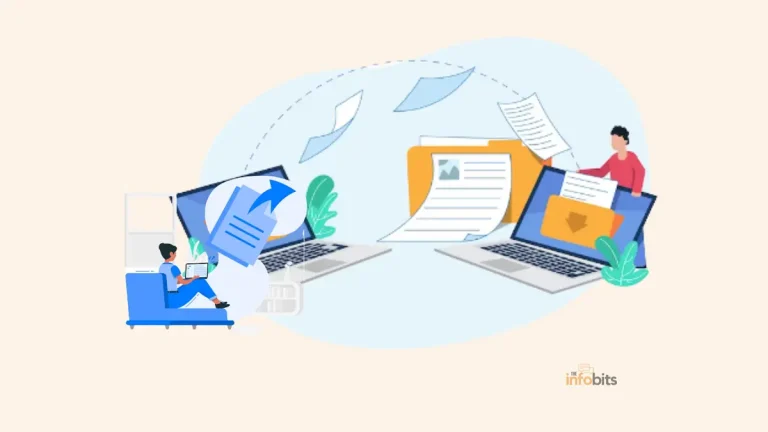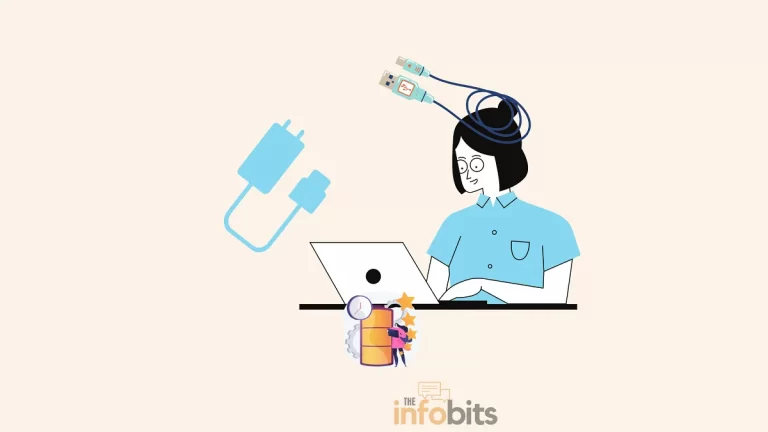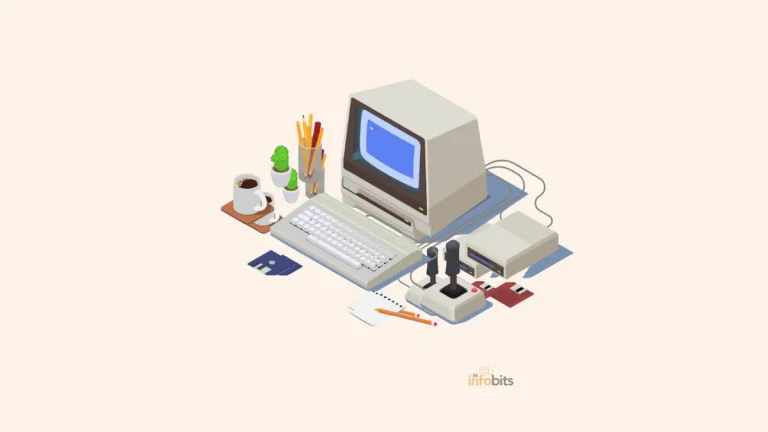Understanding the Difference: RAM vs VRAM Explained
RAM is a term that most people are familiar with. But do you know what VRAM is?
In the comparison of RAM vs VRAM, we can consider RAM as the general memory for normal CPU processes, and VRAM as the video memory for graphics processes.
In other words, RAM is the memory that your CPU uses to store data that is actively in use. VRAM is video RAM, which is used by the graphic processor to store data and perform operations.
On certain PCs that lack graphics cards, primary memory, i.e. RAM, is divided between traditional CPU duties and graphics tasks. They differ on PCs with dedicated graphics processors.
If you’re building or buying a gaming machine, you’ve probably heard the comparison of VRAM vs RAM.
What do these terms video RAM vs RAM mean, how do they differ, is VRAM the same as RAM, and why are they necessary for the best gaming experience?
Let’s look at these questions and see what the difference between VRAM and RAM is. It is also interesting to learn how important they are for your gaming PC.
RAM vs VRAM: What Are the Main Differences?
The primary difference between RAM and VRAM is the purpose for which each is used, as we discussed in the introduction.
There are two types of random access memory in every PC with a dedicated graphics card. The first type of memory is system RAM, which is linked to the rest of the computer via DIMM and SO-DIMM slots (desktop and laptop, respectively).
The second type of random access memory called VRAM can be found on the PCB of your graphics card. VRAM is an abbreviation for Video Random Access Memory. It is commonly referred to as video memory or video RAM.
Both VRAM and RAM save data only when they are powered on. In contrast to HDD and SSD storage, which both retain data even when the computer is turned off, RAM and VRAM memories are volatile.
In general.RAM (Random Access Memory) is a computer’s main memory that stores data. The CPU uses RAM, whereas the GPU uses VRAM.
RAM is used to store temporary system files. So that the CPU can immediately access OS data and processes, applications, or games instead of having to search through secondary storage devices, which are significantly slower than random access memory.
When you launch a web browser, for example, all of the webpages and their content, as well as the data the browser requires to function, are loaded into RAM. You will be able to view each web page immediately, with all of its information already loaded and ready to go.
VRAM, on the other hand, is a type of memory that is not on the mainboard. This memory is located on the graphics card’s PCB and is used to store visual data that the computer displays.
Video memory contains data such as graphics and brightness effects when playing games, as well as video data when editing videos. More video memory usually means being able to work with higher-resolution videos or playing games with ultra-high texture settings.
RAM and VRAM are only two of the many components that comprise a computer.
An issue could be caused by the speed of your CPU, the processing of your GPU, or something else entirely. As a result, you can’t simply replace RAM or VRAM and expect the problem to go away.
More RAM or VRAM, on the other hand, can improve performance only if your PC can handle the task at hand.
Inadequate RAM or other problems with it cause issues with retaining processes or data in memory. The same type of VRAM issue causes your GPU to perform poorly or fail to manage intensive graphics-oriented tasks.
Related: Can We Use Different Brands or Sizes of RAM Together on a PC or a Laptop?
Why Do You Need More RAM on Your PC?
RAM is the computer’s “work area,” where all of the computer’s active processes and applications are stored.
When a new program is launched, it is loaded into RAM and made available to the CPU. RAM is also known as the main memory.
This temporary memory stores data and CPU process trace for a specified period only when you perform any work in your system or while your system is active.
All data is kept in RAM during this time. If you turn off the power, all of this data will be lost.
RAM is used for many of your computer’s routine functions, such as launching the software, connecting to the internet, updating a spreadsheet, or playing the latest game.
Memory also allows you to switch between tasks quickly, remembering where you were in the previous activity when you moved on to the next.
As a result, video games necessitate a certain amount of RAM on your computer to run. This allows the game to be loaded into RAM on your computer and played.
When purchasing a pre-built PC, look under “memory” to see how much RAM it has. Typically, it will range from 4GB to 32GB, but you may find PCs with much more.
Because RAM serves as the computer’s workspace, having insufficient amounts of it may cause your computer to perform poorly.
Your computer is trying to fit everything you’re doing into RAM, but there isn’t enough room. When this happens, your computer stores data in virtual memory.
This is not the same as RAM; in reality, it is simply a section of your hard drive that the PC may use to offload data when RAM is full.
When this occurs, any open applications that haven’t been used in a while will come to a halt when you return to them. This is because the application is shifted to virtual memory due to inactivity and then has to be pulled back into RAM when you return to it.
Many people misunderstand VRAM as virtual memory. However, virtual memory is not the same as video RAM.
Adding more RAM to a system, on the other hand, is not a perfect solution that will solve all of the system’s problems. For example, if your computer’s processor is slow, adding more RAM will not make it run faster.
Although VRAM is dual-port, RAM sticks in computers are single-port. This means that video RAM can perform both read and write operations concurrently.
While the display receives the existing data required to display the image on the monitor, the GPU may load fresh graphics into the memory buffer.
Video memory is much faster than random access memory. While most RAM sticks today use DDR4 (double data rate) technology with an effective speed of 2133MHz and a sweet spot frequency of around 3000-3600MHz, GDDR6 (graphics double data rate, despite using quad data rate bus) operates at 14-16Gbps or 14,000MHz to 16,000MHz effective clock.
As you can see, most new graphics cards use GDDR6 memory, which is significantly faster than the DDR4 memory found in the majority of modern PCs.
Even though RAM and video RAM operate at a lower frequency, these memory devices can perform multiple data operations in a single clock cycle.
With a maximum transfer rate of 20Gbps, GDDR6X, which is found on the RTX 3080 and 3090, is significantly faster.
In most cases, RAM can be changed or upgraded; however, video RAM cannot.
Unless your laptop has soldered RAM, you can replace RAM sticks with faster or larger ones. DIMM memory slots are found in desktop computers, whereas SO-DIMM memory slots are found in laptop computers.
VRAM in a dedicated graphics card can not be replaced as it is directly soldered to the graphics board. Because integrated GPUs lack dedicated VRAM, a portion of RAM is used as visual memory.
What Is the Importance of VRAM?
VRAM functions similarly to RAM but for your graphics, video, and display needs. VRAM is typically found in the hardware that displays content on your screen.
If your computer has a graphics card, VRAM is used to process all display data. If you don’t have a graphics card, your CPU’s built-in graphics will use some of the system’s RAM.
When shopping for a new graphics card, check the specifications to see how much VRAM it has. VRAM on a graphics card is typically indicated in gigabytes and written on the box; a 4GB graphics card will have 4GB of VRAM.
VRAM assists your PC in handling graphics activities in the same way that regular RAM assists it in processing calculations. As a result, if you’re having display issues, adding more VRAM may be beneficial.
Additional VRAM is beneficial if video games run at higher settings but smooth out when the quality is reduced.
VRAM is also required for rendering games at specific resolutions; for example, a 1080p gaming experience necessitates approximately 2-6GB of VRAM.
VRAM, like RAM, on a graphics card, isn’t the be-all and end-all of performance. Processors in graphics processing units (GPUs) operate at varying clock rates, with some performing better in terms of cooling than others. When comparing GPUs, it’s critical to take both into account.
However, having more VRAM isn’t always a good thing.
For example, the recently released RTX 3060 has 12 GB of video RAM. That’s all well and good, but the RTX 3060 Ti has only 8GB of video RAM.
The RTX 3060 performs slower in both games and productivity apps despite having 50% more VRAM. The RTX 3060 Ti outperforms the RTX 3060 because it has a more powerful GPU with more CUDA cores.
Furthermore, the Ti version of the card has a larger memory bus (256 bits vs. 192 bits on the RTX 3060), which results in increased bandwidth (448 GBps on the RTX 3060 Ti vs 360 GBps on the 3060).
A higher data rate equates to a larger bandwidth. Even though the RTX 3060 Ti has less video RAM, it performs better.
If you need a graphics card, we recommend the ZOTAC Gaming GeForce RTX 3060 Ti (available on Amazon).
Is 8GB VRAM necessary?
You’ll get better performance from an RTX 3060 Ti, but also from an RTX 3070 or 3080, which have less video memory but far more powerful graphics chips.
More than 8GB of VRAM is not required unless you have specific needs, such as editing 8K footage.
Can RAM Be Used as VRAM?
Unfortunately, purchasing additional RAM to address a VRAM issue is not a good idea, and vice versa. Similarly, 32GB of RAM will not enable 4K gaming in the absence of a GPU.
All of the extra RAM will be useful for multitasking and loading applications, but it will not affect graphics rendering.
But wait a minute. As previously stated, integrated graphics processors use a portion of the system RAM.
So, why can’t you achieve the same impact as an 8GB graphics card by purchasing a large amount of RAM and allocating 8GB of RAM as VRAM?
The problem is that system RAM does not handle display data as done by VRAM. Data can be transferred quickly and easily because the VRAM on a graphics card is close to its processor.
Games that use RAM as VRAM will be laggy and uncomfortable to play because visual data takes a little longer to reach system RAM.
Related: How Many Bytes In A Gigabyte?
Summary
You’ll need a lot of RAM and VRAM if you’re building a computer that can handle 3D graphics.
Both of them have 3D rendering tasks to complete, and it’s up to you to make sure your PC has enough space for them to do so. Unfortunately, a gaming PC is much more than its RAM and VRAM.
There are several other factors to consider, including the CPU, power supply, motherboard, and fan location. Fortunately, there are numerous tips and tricks you can employ to ensure a fantastic final result while assembling your PC.
To summarise the difference between RAM and VRAM. VRAM is used to store graphics data, whereas RAM is used to store temporary system files. VRAM is irreplaceable in PCs with discrete GPUs, whereas RAM can usually be replaced or improved.
Although video memory is much faster than system memory, most users have significantly more system memory than VRAM.
Frequently Asked Questions
Is VRAM better than RAM?
VRAM outperforms system RAM in terms of speed. A system RAM stick with double data rate (DDR4) technology has a frequency of around 3,000 to 3,600 MHz, but VRAM with Graphics Double Data Rate 6 (GDDR6) technology has a frequency of 14,000 to 16,000 MHz.
Do games use RAM or VRAM?
Games played on PCs with discrete graphics cards have dedicated VRAM that handles all graphical functions. However, a PC without dedicated VRAM manages basic game graphics using a portion of its RAM.
Does GPU have RAM or VRAM?
Just as your computer has RAM, a dedicated GPU will have VRAM memory (video RAM).
Do you need 16GB of VRAM?
VRAM is required to render graphics at specified resolutions; for example, a 1080p gaming experience requires 2 to 6GB of VRAM. Unless you have special demands, such as editing 8K video, more than 8GB of VRAM is not necessary.
What is better VRAM or RAM?
We cannot argue that one is superior to the other RAM and VRAM both play important roles in computer functioning. However, in terms of performance and speed, VRAM outperforms RAM since it is quicker and allows for simultaneous read and write operations. Furthermore, RAM is more vital for typical computer operations, but VRAM is more important for graphics-oriented tasks, particularly in gaming computers.
Is VRAM the same as RAM?
No.VRAM is video memory used in graphics cards for graphics-oriented operations, whereas RAM is the main memory used in main motherboards for general PC operations.
What is VRAM?
VRAM is an abbreviation for Video Random Access Memory. It is also known as video memory or video RAM. VRAM is located on the PCB of your graphics card. When playing games, VRAM manages data like graphics and visual effects, as well as video data when editing videos.
We hope you found this post useful, and please like and follow us on Facebook and Twitter for regular updates.
We also request that you bookmark this page for future reference. Sign up for our free newsletter as well to receive new information in your inbox regularly and stay technically up to date.







